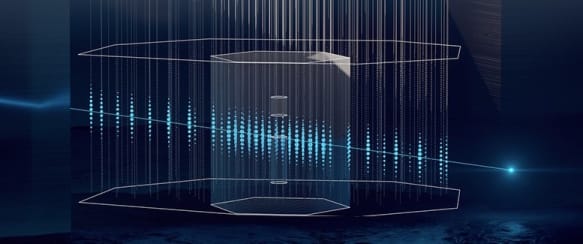
The IceCube-Gen2 Collaboration recently wrapped up a weeklong kick-off meeting to formalize a technical design report for the project. With over 100 participants and 50 talks, the interdisciplinary workshop brought together scientists and engineers from around the world to discuss the status of design and performance requirements that will lay the foundation for IceCube-Gen2’s technical specifications.
IceCube-Gen2 is the next-generation extension of IceCube, the cubic-kilometer-scale neutrino detector built at the South Pole. Since its completion in 2010, IceCube has outperformed all expectations. Some of IceCube’s “firsts” include the first observation of cosmic neutrinos, first evidence of a source of high-energy neutrinos, and the first observation of a Glashow resonance event.
But to make new physics discoveries and continue to probe the mysteries of the universe, bigger and more sensitive observatories than IceCube are needed. That is what has driven the planning for IceCube-Gen2.
IceCube-Gen2 is designed to not only expand the IceCube detector volume by tenfold but to also include a radio component covering an area 50 times larger, which will improve sensitivity to neutrinos in the EeV range by two orders of magnitude. IceCube-Gen2 would be by far the largest radio neutrino detector ever built.
The experience of the past decade presents an enormous opportunity to capitalize on gains made by constructing and operating IceCube. A much greater understanding of the Antarctic ice, progress in construction and drilling technology, and the first measurements of the cosmic neutrino flux make it possible to construct the ten-times-larger IceCube-Gen2 on a budget and schedule similar those for building IceCube. With enhanced sensitivities and more precise data measurement capabilities, IceCube-Gen2 will be poised for breakthroughs at the forefront of multimessenger astronomy.
IceCube-Gen2 collaborators spent the week of their workshop further defining the science possibilities and baseline designs of the future detector, with the goal of releasing a comprehensive technical design report in the middle of 2022. The collaboration brings decades of experience from IceCube, the current IceCube Upgrade, and from radio detector deployments at both the South Pole and Greenland. This extensive expertise is now channeled toward developing the largest and most sensitive neutrino telescope ever built.
For further information and project details, see: